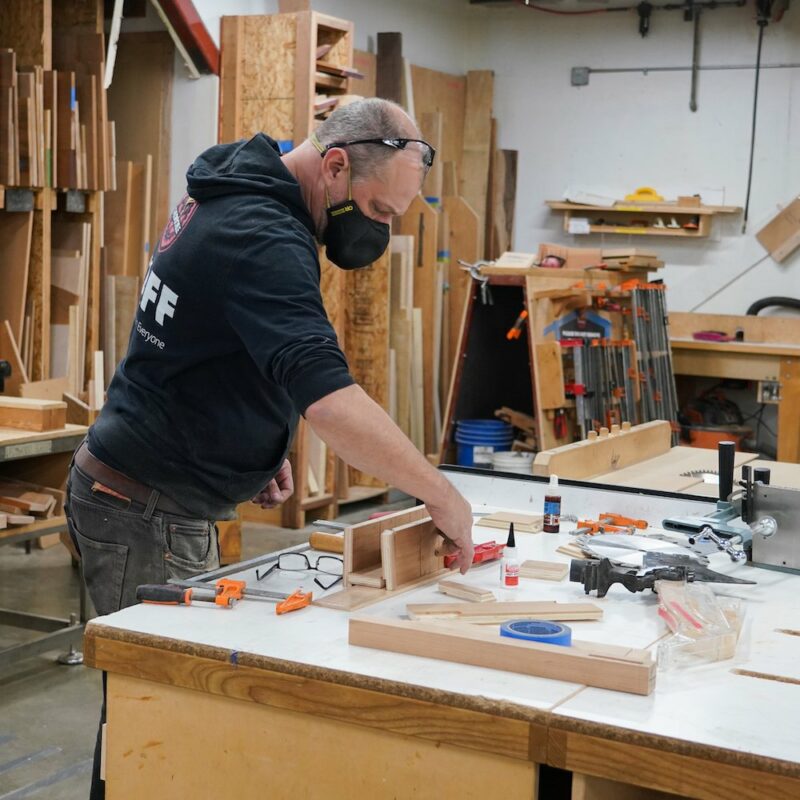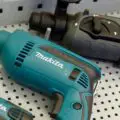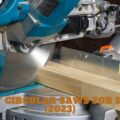Power Tools
Woodworking for Beginners: Guide to Woodworking Measurement Tools
Woodworking is a vast subject. Nonetheless, the first step to creating a work of art is a good idea. This idea is eventually drawn into a plan for incredible efficiency. This plan has to be accurate, with the correct measurements. In this article, I will talk about woodworking for beginners and the most suitable marking and measuring tools, perfect and essential for all woodworking projects.
I’ve done my research before coming up with this list, and I also have ample experience in this field, so I won’t keep you waiting. Here is a list of woodworking measurement tools:
The following list represents the fundamental tools every woodworker needs to have in their toolbox:
Wooden or Mechanical Pencil
Yes, a pencil is essential for drawing the plans mentioned above. Mechanical pencils are the best option since they always establish sharp and clear drawings. They come in several sizes, the 0.5mm to 0.9mm thickness. The 0.7mm pencil is ideally thin to deliver practical lines. Besides, it’s not so thin that it breaks every time you sharpen or use it.
The 0.9mm pencil is an excellent choice when working with rough wood since the extra thickness ensures it doesn’t break. The 0.6 and 0.5mm pencils should only be used on paper or smooth wood.
Tape Measure
This is yet another essential measuring tool for woodworkers. They usually come in varying lengths ranging from 3 to 8 meters. Additionally, they are easy to use and incredibly legible, which is why they are an excellent option for quick measurements.
Nonetheless, I would not recommend using it as your main measuring tool when precise measurements are a priority. They are not as accurate, so they cannot be trusted when you cannot afford to be inaccurate.
For newbies, a 16ft tape measure should be more than enough; luckily, they are more convenient to use.
Ruler
This one is the most obvious measurement tool in this list. It’s also the most user-friendly option, having used it even in school.
Generally, rulers are perfect for measuring and marking. Additionally, they are useful when you want to make a straight line on your workpiece.
However, this measuring tool does present some range restrictions because of its length, but having both 12-inch and 6-inch rulers will come in handy. It’s usually perfect for measuring shorter lengths and will deliver more accurate results than a tape measure. Lastly, a ruler can work as a straight edge to guide your pencil for precise markings.
Framing Square
So far, we can all agree that woodworking for beginners doesn’t have to be complicated.
These are more or less like square rulers. They include a true 900, handy for checking or marking conformity cuts on your workpiece. Moreover, they come in different sizes ranging from 12×8 & 24×8 inches. The larger options give a larger point of reference.
These tools are employed throughout the entire woodworking process to guarantee that every angle is 900. They are particularly useful for general casework.
Try Square
Like its counterpart, the square ruler, this one is created with a true 900 angle. However, it has a broader base which you can use as a stopper. Its main role is to check and mark if a cut or an edge is square with respect to an adjacent edge. Moreover, most Try squares can also produce a 450 angle.
Combination Square
These are perfect for assessing height settings on power tools like table saws and routers. When you use it, the adjustable ruler can integrate constancy when you need to mark more than one point.
While this tool is well-loved by many beginner woodworkers thanks to its incredible versatility, I mostly find it valuable when using its sliding head as a reference point when marking a piece of wood.
Finally, it is perfect for checking or setting up my power tools, including the plunge router and table saw.
Vernier Calipers
This list wouldn’t be complete without vernier calipers. Generally used to assess the gauge of router bits, drill bits, blade widths, and screw sizes, vernier calipers are a vital part of a woodworker’s collection of measurement tools.
Moreover, you can use them as a debt gauge when checking holes, slots, and mortise joints. While most people might not see vernier calipers as necessary, they are if you want to make accurate measurements.
In the woodworking scene, they have become handy when measuring the widths, depths, and diameters of workpieces and tools.
Other Woodworking Measurement Tools
While the list above includes the must-have measurement tools, here are some more you might find worthy of investing in:
Sliding T-Bevel
This one is frequently used with a protractor, allowing you to mark angles. Also known as a bevel gauge, it is great for transferring the measured angles to other tools, including a table saw’s blade. Besides, digital bevel gauges don’t need to be used with a protractor.
Protractor
We’ve all used protractors at some point, and we can agree that they are perfect for locating and drawing angles. Also, they are the ideal tools for setting an angle on a bevel gauge.
Straight Edge
These are handy in drawing lines and checking the evenness of a hand plane or board. They are vital in modifying the jointer’s depth of cut.
Why You Should Trust Us
At Woodworking Tool Guide, we know one size doesn’t fit all! We cater to every woodworker, from beginner to pro, with insights and recommendations tailored to your skill level, project needs, and budget. We take the guesswork out of choosing the right tools, whether you’re tackling your first crafting a masterpiece for the ages. So grab your chisel, join our community, and let’s build something amazing together!
Woodworking Tool Guide wasn’t just born, it sprouted from a seed of passion for the craft. What started as a joyful exploration blossomed into a trusted online haven for fellow enthusiasts like you. We pour our love into meticulously chosen review selections, meticulous hands-on testing, and lab-backed insights, all to empower you with reliable, comprehensive information you can build on. So, grab your tools, trust our guidance, and let’s build something beautiful together!
Passion-Driven Expertise
Our journey started with a shared love for woodworking. The team behind the Woodworking Tool Guide is comprised of individuals who are not just writers but passionate woodworkers themselves. This shared enthusiasm ensures that our content is crafted with a deep understanding of the craft and an authentic appreciation for quality tools.
Top Tool Guides Online
Woodworking Tool Guide has rapidly ascended to become one of the premier online destinations for tool guidance. Our commitment to excellence and the accuracy of our information has positioned us as a reliable source for both beginners and seasoned woodworkers seeking trustworthy advice on the best tools for their projects.
User-Centric Approach
Our content caters to every woodworker, from rookies just starting out to seasoned pros tackling intricate projects. We tailor our insights and recommendations to your skill level, project needs, and budget, ensuring you find the perfect tools to match your unique woodworking journey. So step into your workshop, grab your tool belt, and let Woodworking Tool Guide be your trusted companion as you craft your masterpieces.
Continuous Support and Innovation
Woodworking is an ever-evolving craft, and so is our commitment to supporting you. We are dedicated to bringing you the latest information on woodworking tools, techniques, and trends. Our team is actively working to expand our content and bring you more valuable insights, ensuring that you stay well-informed in your woodworking adventure.
Hands-On Experience
Ditch the endless research rabbit hole! At Woodworking Tool Guide, we believe in actionable advice, not armchair analysis. We get our hands dirty, putting every tool through its paces in real-world woodworking scenarios. Whether it’s the precision of a table saw, the versatility of a router, or the tactile satisfaction of a handplane, we test for performance, durability, and user-friendliness. No more sifting through dry specs – we deliver practical insights you can trust to transform your woodworking dreams into reality.
Woodworking Tool Guide isn’t just a review site, it’s your trusted companion on the sawdust-filled path to woodworking mastery. Our expert team, led by veteran David Jones, meticulously tests and explains tools in terms you understand. We cut through the jargon, bias, and confusion with real-world insights and honest evaluations. Join our passionate community, where decades of experience, cutting-edge knowledge, and shared love for the craft come together to guide you every step of the way. So grab your chisel, buckle up, and let’s embark on this exciting woodworking adventure, together!
Conclusion
Woodworking for beginners wouldn’t be complete without this set of measurement tools. In my woodworking classes a few years ago, when I was getting started, our first project was to build a toolbox. Yes, it’s a simple and excellent project for newbies.
I had to draw my toolbox plan, decide the measurements I wanted, and begin building. To achieve unmatched accuracy, I used most of the tools in this article, and it paid off. While I often had to double-check all the measurements I made with the tape measure, I can’t honestly say it wasn’t a huge part of my success.
And even though making a toolbox can’t require as much accuracy as making a wooden wall unit, these tools here will be handy in both projects. What I’m trying to say is that the measurement tools you need will depend on your project.
Finally, remember to prioritize quality. Don’t invest in low-quality tools and expect high-quality results.






